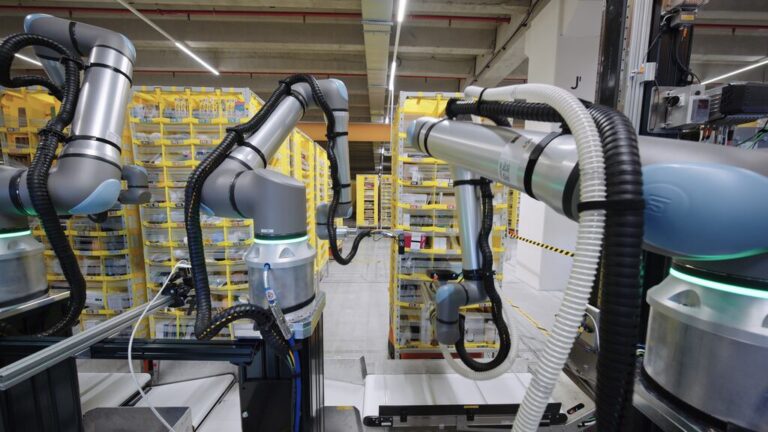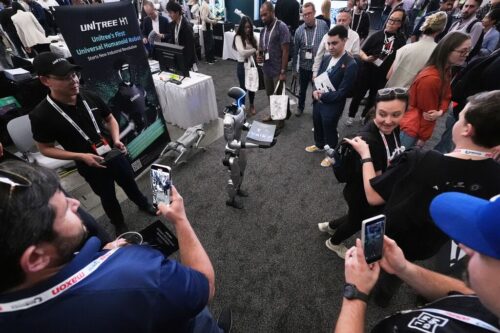Amazon unveiled its latest warehouse robot on Wednesday, dubbed Vulcan, the company’s first with a sense of touch to help it manipulate all the shapes and sizes of different items.
Designed and manufactured at Amazon’s robotics operations outside Boston, Vulcan can place an item in a storage bin while carefully nudging other items out of the way. Amazon engineers used generative artificial intelligence software to help Vulcan pick up items and navigate the tight confines of warehouse storage bins.
“When people are moving things in very cluttered environments, like reaching into a drawer full of keys and finding a key and pulling that out, we use touch to do that,” Amazon vice president Scott Dresser said. “ Vulcan has that capability now through these advanced sensors and generative AI.”
In Amazon’s vast storage warehouses, such as its 4-million-square-foot fulfillment center in North Andover, items are sorted onto tall, four-sided shelving pods, each with dozens of compartments. All different kinds of items are stored almost at random on each pod.
The company already had mobile robots, called Hercules, that slip under the shelving pods and move them around the warehouse. Human workers sorted new items arriving at the warehouse and placed them onto the shelving pods.
Now Vulcan can also sort items and place them on the pods.
Humans will still load many items onto the shelving pods. Vulcan will concentrate on filling cubbies at the lower and higher sections of the 8-foot-tall pods. That should spare the human workers from bending and stretching in ways that could cause repetitive stress injuries.
“Vulcan is really good at doing that part of the job,” Dresser said. “So we provide a better work environment, safer work environment, for our employees.”
While that may require fewer workers loading the pods, Amazon will add jobs in robot maintenance, Dresser said. “As we deploy more robots, we need more skilled folks that are helping us with maintenance,” he said.
So far the Vulcan robots have been only installed at a facility in Spokane, Wash., and Hamburg, Germany. The plan is to deploy thousands of the touch-sensing bots at warehouses around the world, Dresser said.
The team that designed Vulcan named the bot after the Roman god of fire and blacksmithing, he said. “The team is a builder team and they like this connotation of a forge and building something new,” Dresser said.
Amazon has already manufactured more than 750,000 of its other types of robots at its facilities in Westborough and North Reading. The Amazon Robotics unit was created more than a decade ago when the company bought local startup Kiva Systems, helping stoke Boston’s thriving robotics ecosystem.
From Amazon to Tesla, humanoid robots are all the rage. What’s behind the hype?MIT and Amazon team up to study robots in the workplaceAmazon shows off latest robots, drones, and electric vehicles in Westborough




Comment count: